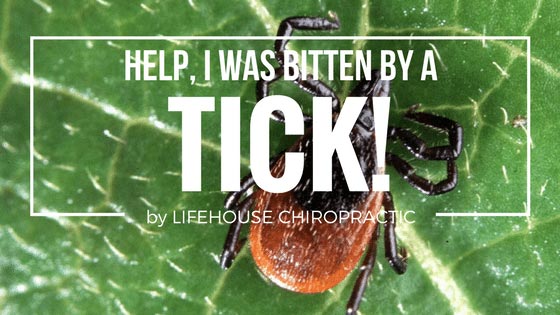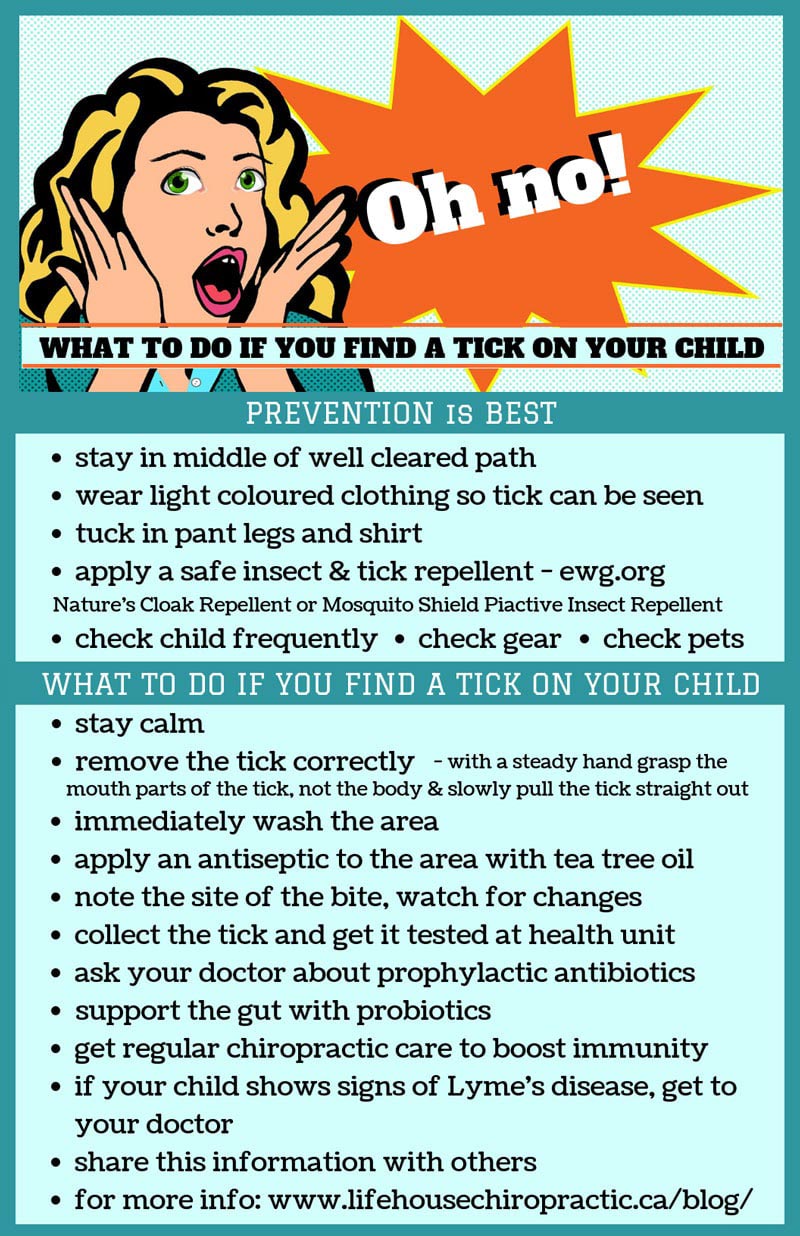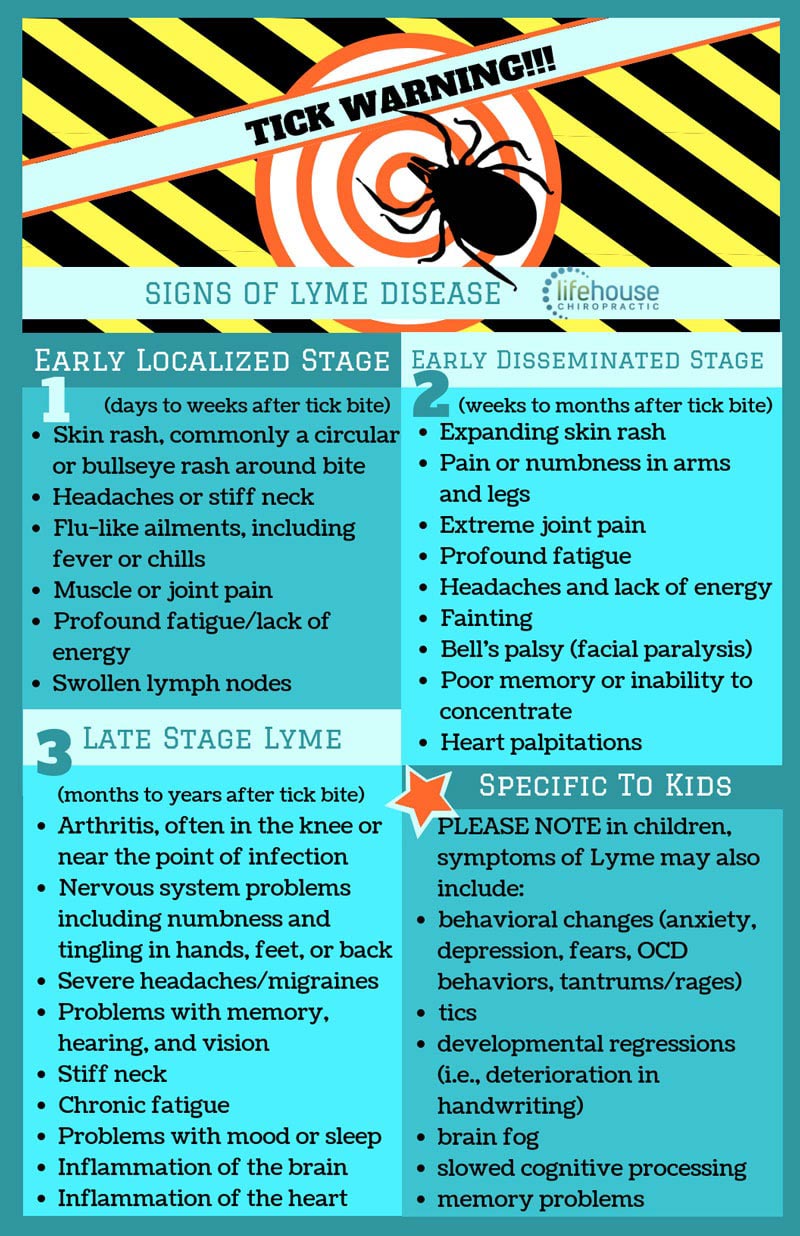Help, I Was Bitten By A Tick in London ON

It’s summer in London, ON, and that’s a good reason to get outdoors! Sadly, with all the fun and freedom that being outdoors has to offer, there are some very tiny creepy crawlers that can transmit big infections that have the potential to leave you or your child with long term health effects. Ticks are scary in that they can transmit infections that are associated with things like Lyme disease, Bartonella, Babesia, Erhlichia, Anaplasma, Tularemia, Rocky Mountain spotted fever and relapsing fever. Keep reading for some tips from a top London ON chiropractor.
The thing is, there are more and more ticks migrating to the London area, and an increasing number of them are infectious [1]. According to Cheryl Abbate of the Sun County Lyme Awareness Support Group, “Ticks are nature’s dirty needle. They can carry many different diseases” [2]. The biggest concern with getting bitten by a tick is the risk of transmission of a tickborne illness. Lyme disease is probably the most well-known, but the other infections can be just as debilitating. In children, these infections can become an autoimmune encephalitis, called PANS (Pediatric Acute-Onset Neuropsychiatric Syndrome), which includes PANDAS (Pediatric Autoimmune Neurophsychiatric Disorder Associated with Striptococcal Infections). Children with PANS/PANDAS develop a sudden onset of fears, anxiety, OCD behaviours, rages, tics, bedwetting, handwriting regression and brain fog.
Although using a holistic integrative approach can help children affected by these infections, it is better to prevent the onset of the infection in the first place. So, this article will help you know exactly what to do if your child gets bitten by a tick.
PREVENTION IS BEST
The best option is to avoid a tick bite in the first place. Here are some tips on how to avoid ticks.
- Stay to the middle of a well-cleared path whenever possible.
- Wear the right clothing. Wear bright-colored clothing so that a tick can more easily be seen should it land on you or your child. It is best, although not the greatest fashion trend if pants are tucked into socks and shirts tucked into pants to provide fewer entry points to the skin for the tick.
Apply a safe repellent that protects against ticks. A 2004 study found lemon eucalyptus extract, Citriodiol, may become a useful means in reducing the number of tick bites and thereby tick-borne infections. A 2008 study found tansy essential oils to be very effective in repelling ticks by up to 64-72%. As with any repellent, it is important to apply frequently, every 2-3 hours or more frequently after sweating or swimming. For a natural tick repellent, try Nature’s Cloak Insect and Tick Repellent which can be shipped to London, ON from amazon.com.
- Do Frequent Tick Checks. If you see a tick on your child’s clothing, flick it away. If you think your child has been bitten by a tick, the earlier you find it and remove it, the better. It’s not clear on how long a tick needs to be embedded in order to transmit infection, it is known that the longer the tick is attached, the higher the risk of transmission. It was previously thought that the tick had to be attached for more than 24 hours to transmit Lyme disease, but now just a few hours may be enough. Early tick detection and removal is critical to preventing Lyme disease.
- Check your pet. Check your pet so as to protect them from tick-borne diseases and to prevent them from carrying ticks into your home and onto your family.
- Inspect your gear. If you’ve taken backpacks or camping gear out into the woods, be sure to wash and dry or least inspect the gear before putting it away.


WHAT TO DO IF YOU FIND A TICK ON YOUR CHILD
- Stay calm.
- Remove the tick.
- Do not… burn the tick off with a match or lighter, smother it with petroleum jelly or tug at it with your fingers.
- Use a safe tick removal method with a pair of fine pointed tweezers. With a steady hand grasp the mouth parts of the tick, not the body, and slowly pull the tick straight out. Watch this video for proper technique, as you do not want to break the body from the mouth, and leave the mouth parts imbedded in the skin.
- Or Head to your doctor’s office or nearest urgent care centre.
- Immediately wash the area with warm water and soap.
- Apply an antiseptic like tea tree oil to the area.
- Note the site of the tick bite. Draw a circle with a ballpoint pen around the bite site so that you remember where it is and watch for any changes.
- Collect the tick and get it tested. Put the tick that has been removed from your child into a ziplock bag or closed container and take to your local public health unit for testing. Read here, for details on submitting a tick in the London ON area.
- Ask about prophylactic antibiotics. Get your child to a doctor who is knowledgeable about Lyme disease and discuss a regimen of antibiotics – either pharmaceutical or natural. In this case, suffering the effects of a course of antibiotics is a lesser evil than suffering the effects of chronic Lyme disease.
- Support your child’s gut while they are taking antibiotics. Be sure to give your child probiotics at least 1-2 hours after each antibiotic dose and load up on fermented foods like real pickles, kombucha and miso soup. As well, provide a diet of whole foods with lots of veggies, while minimizing processed foods.
- Get regular chiropractic care. Chiropractic care can help the immune system to work better, therefore, it is helpful in the fight against tickborne infections [3].
- Watch for signs of Lyme disease. In spite of your best efforts, on occasion, your child may develop Lyme disease. There are three stages of Lyme disease. If left untreated, one stage usually progresses to the next [4].
- Early Localized Stage (days to weeks after tick bite)
- Skin rash, commonly — but not always — a circular or bullseye rash around the bite area
- Headaches or stiff neck
- Flu-like ailments, including fever or chills
- Muscle and joint pain
- Profound fatigue or lack of energy
- A small bump or redness at tick bite
- Swollen lymph nodes
- Early Disseminated Stage (weeks to months after tick bite)
- Expanding skin rash (more or larger rashes covering more parts of the body)
- Pain or numbness in arms and legs
- Extreme joint pain
- Profound fatigue
- Headaches and lack of energy
- Fainting
- Bell’s palsy (facial paralysis)
- Poor memory or inability to concentrate
- Heart palpitations
- Late-Stage Lyme (months to years after tick bite)
- Arthritis, particularly in the knee or near the point of infection
- Nervous system problems including numbness and tingling in hands, feet, or back
- Severe headaches or migraines
- Problems with memory, hearing, and vision
- Stiff neck due to swollen tissues
- Chronic fatigue
- Problems with mood or sleep
- Inflammation of the brain
- Inflammation of the heart
- PLEASE NOTE that in children, symptoms of Lyme may also include behavioral changes (anxiety, depression, fears, OCD behaviors, tantrums/rages), tics, developmental regressions (i.e., deterioration in handwriting), brain fog, slowed cognitive processing, and memory problems.
- If your child develops signs of Lyme disease, go to your doctor or if your physician will not test appropriately or is not well-versed in Lyme disease, please find a Lyme-literate practitioner near you through ILADS (International Lyme and Associated Diseases Society).
- Please share this information with any family who loves spending time outdoors in nature, so we can all do our best to keep our children healthy and happy for a lifetime!
Sources:
https://www.ncbi.nlm.nih.gov/pubmed/15605645
https://www.ncbi.nlm.nih.gov/pubmed/18283947
https://www.youtube.com/watch?v=AmM5NmQMHVo
http://www.health.gov.on.ca/en/common/system/services/phu/locations.aspx
https://www.healthunit.com/submit-tick-health-unit
CONVENIENT
OFFICE HOURS
Give us a call and let's find out how we can make your time in our office as convenient for you as possible.
Monday
7:30am - 11:00am
3:00pm - 6:00pm
Tuesday
3:00pm - 6:00pm
Wednesday
7:30am - 11:00am
3:00pm - 6:00pm
Thursday
3:00pm - 6:00pm
Friday
7:30am - 11:00am
Saturday
Closed
LifeHouse Chiropractic
520 Springbank Drive #4
London, ON N6J 1G8
Phone (519) 204-9460
Fax (519) 601-9461




